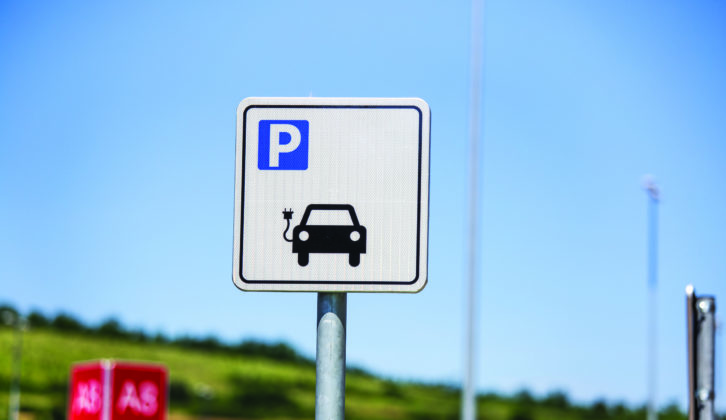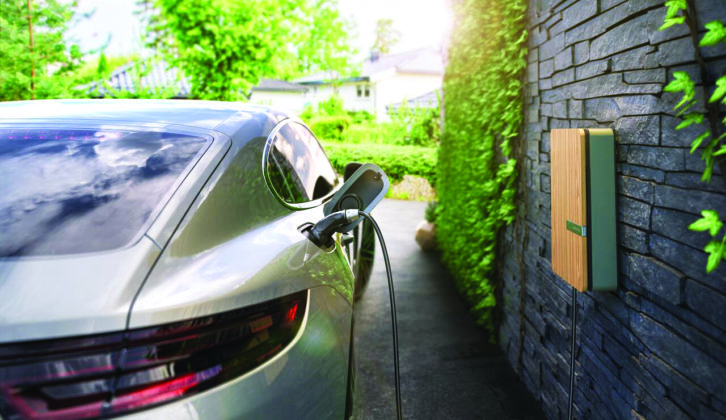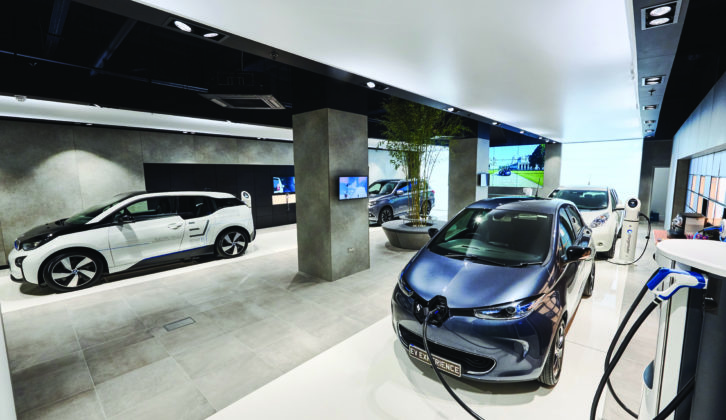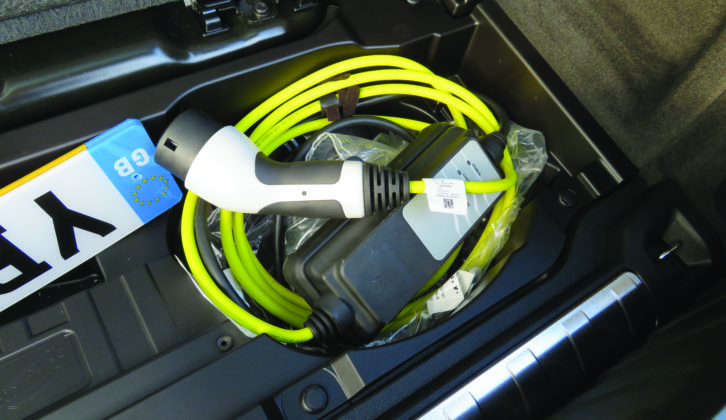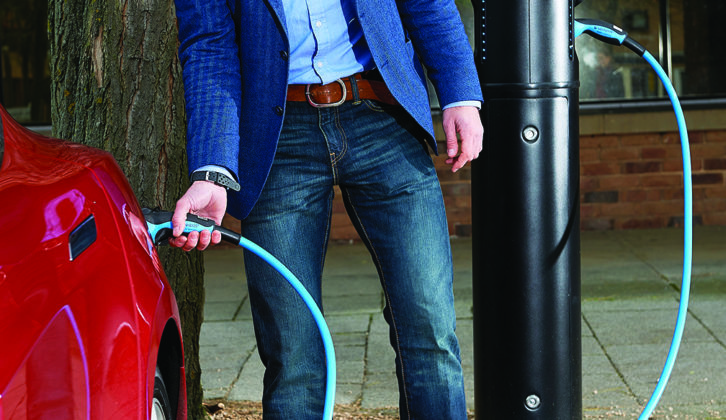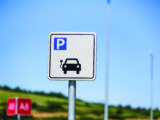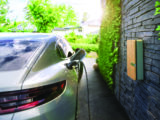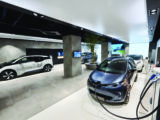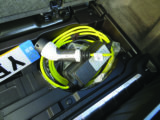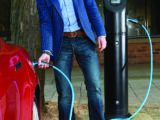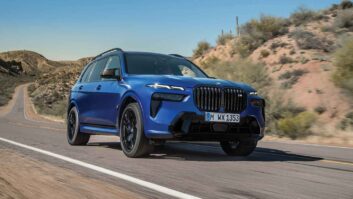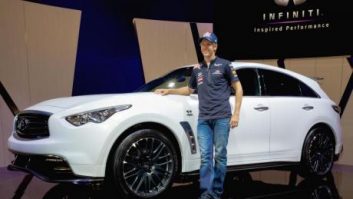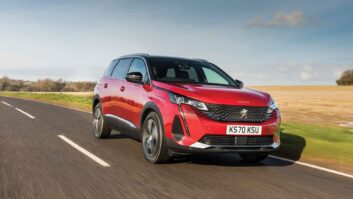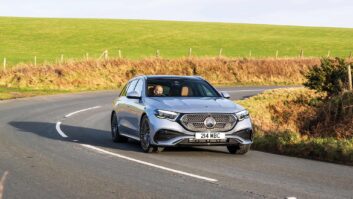David Motton reveals what you need to know about electric tow cars
Sales of electric cars went up by 144% last year. That’s a staggering increase. But while there’s every chance of you spotting an electric vehicle (EV) or two in your neighbourhood, you’re much less likely to see one at a caravan park.
This is going to change, and quite soon. A number of electric cars are now legally approved for towing, and some of them have towing limits to rival those of big diesel SUVs. And these days, there are more and more ‘electrified’ tow cars of various kinds coming onto the market.
What do carmakers mean by ‘electrifying’ their cars?
The car manufacturers tend to refer to ‘electrification’ to cover all of the different ways of adding battery power to cars, from mild hybrids to fully electric vehicles.
Mild hybrids typically use a 48V starter-generator to assist the petrol or diesel engine, but can’t run on electric power alone. This type of hybrid is increasingly common as a relatively low-cost way for carmakers to ‘electrify’ existing models, improving fuel economy and reducing emissions. From the driver’s seat, you’d be hard-pressed to tell a mild hybrid apart from any other car. As for towing, they have similar ability to conventional petrol and diesel models.
Examples include the Kia Sportage 2.0 CRDi 48v and the Land Rover Discovery Sport D180, which we reviewed in the previous issue.
Self-charging hybrids can usually travel short distances on electric power alone,
and don’t need to be plugged in to replenish their batteries. Instead, they recoup energy that would otherwise be lost while coasting or braking.
As a rule, however, self-charging hybrids tend to have relatively low towing limits. For example, the Toyota Prius can legally tow just 725kg.
Plug-in hybrids (PHEVs) combine battery power with an internal combustion engine, and their batteries can be topped up from
a charging point, as well as by capturing energy while slowing down.
Many day-to-day journeys can be completed on electric power alone, but there’s the safety net of an engine and
a fuel tank for longer drives. Perhaps not the best of both worlds, but a PHEV does combine some of the strengths of an
EV and a conventionally powered car.
A Mitsubishi Outlander PHEV has a legal towing limit of 1500kg, while a Volkswagen Passat GTE can tow up to 1600kg.
Then there are battery electric vehicles, which have no internal combustion engine, and rely entirely on battery power.
Which battery electric cars are permitted to tow?
More than you might think. The Audi e-tron (up to 1800kg), the Jaguar I-Pace (750kg), the Mercedes-Benz EQC (1800kg), the Tesla Model 3 (910kg) and the Tesla Model X (2250kg) can all tow.
These are the legal maximums, although we’d recommend towing no more than 85% of the kerbweight, even if the official towing limit is greater.
However, it takes relatively deep pockets to buy one of these vehicles. The most affordable is the Model 3, priced from £38,500 after the £3500 plug-in car grant has been deducted.
More affordable EVs, such as Hyundai’s Kona Electric, the Kia e-Niro and Nissan’s Leaf, are not approved for towing.
How well can electric vehicles tow a caravan?
We’ve only towed with one electric car, the Jaguar I-Pace. It performed superbly, with tremendous acceleration and really unshakeable stability. However, it was only pulling a 750kg trailer.
There are several characteristics of EVs which are valuable assets while towing. One is weight. As a rule, EVs weigh more than a conventionally powered vehicle of similar size.
For example, Audi’s conventionally powered big 4×4, the Q7 50 TDI, has a kerbweight of 2240kg. The Audi e-tron makes the scales groan at 2565kg, over 300kg more. That’s a great deal of extra weight pinning the e-tron firmly to the road, and helping to keep a caravan towing straight and true.
Then there’s torque: the twisting force an engine or motor produces. The diesel Q7 puts out 443lb ft from 2250-3250rpm. Between them, the e-tron’s twin electric motors manage 490lb ft.
What’s more, the driver doesn’t need to wait for the engine to reach a certain rev range for that force to be delivered. With an electric motor, torque is available immediately. That helps the likes of Tesla post staggering acceleration times, and means a high-performance EV should quickly and confidently tow a sensibly matched caravan up to speed.
What are the disadvantages of an electric tow car?
In everyday driving, ‘range anxiety’ is less of a concern than it used to be, because there are models with real-world ranges of 200-300 miles.
However, when we towed with a Jaguar I-Pace, we found that towing depleted the battery a lot more quickly than regular driving, giving a towing range of a little over 100 miles.
In addition, there’s the complication of recharging your vehicle. You’ll find charging points at motorway services, but they will have car-sized bays, rather than room for a tow car and caravan.
So you would need to find the caravan parking area, unhitch, secure the van to ensure nobody else can tow it away, then drive back to the charger.
The time needed to recharge the car will vary, depending on the vehicle and the type of charging point, but as an example, the I-Pace can go from flat to an 80% charge from a 100kW charger in about 40 minutes. However, such powerful chargers remain relatively rare at the moment.
This is where, for the time being at least, Tesla has a substantial advantage over the competition. The Supercharger network is highly developed, uses 120-150kW chargers, and can be found at many motorway service stations. But it can only be used by Tesla vehicles.
The IONITY and BP Ultracharge networks are promising to match or beat the power of a Tesla Supercharger and can be used by any compatible vehicle, although coverage is currently sparse.
So for the present, electric cars are perfectly capable of towing, but best suited to short distances – good examples would be pulling a sailing dinghy to a nearby lake, or towing a horsebox to a local gymkhana. Caravan trips are possible, but they are not going to be as easy or convenient as towing with a conventional vehicle.
So, would a plug-in hybrid be a better choice of tow car?
Well, that depends how it is used. To get the most from a PHEV, in terms of low running costs and environmental benefits, requires a particular pattern of driving.
Ideally, you need to be able to recharge at home or work, and daily mileage should be within the vehicle’s all-electric range. Then you can go for long periods without filling up with petrol or diesel. It’s a very green way to drive, especially if you recharge on a renewable energy tariff.
Long-distance driving is not so simple, when the battery runs low after 20 miles or so, and the internal combustion engine is left to do most of the work. However, the latest generation of PHEVs will go further on a charge, and remain fuel-efficient even when the battery is low.
Diesel shouldn’t be ruled out. The best modern diesel engines are far cleaner than reputation suggests, and well suited to regular long-distance trips. But if you mostly drive short distances and want a green car that’s practical to tow with, a PHEV is likely to be your best bet.
Plug-in hybrids combine battery power with an internal combustion engine, and their batteries can be topped up at a charging point
